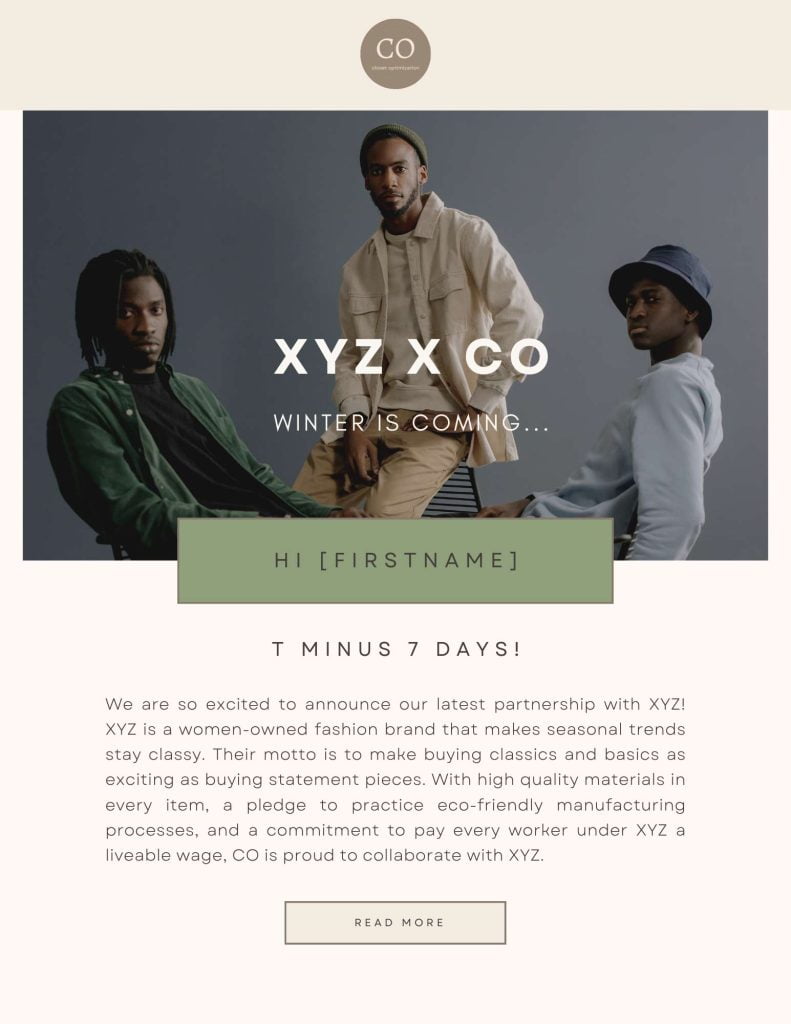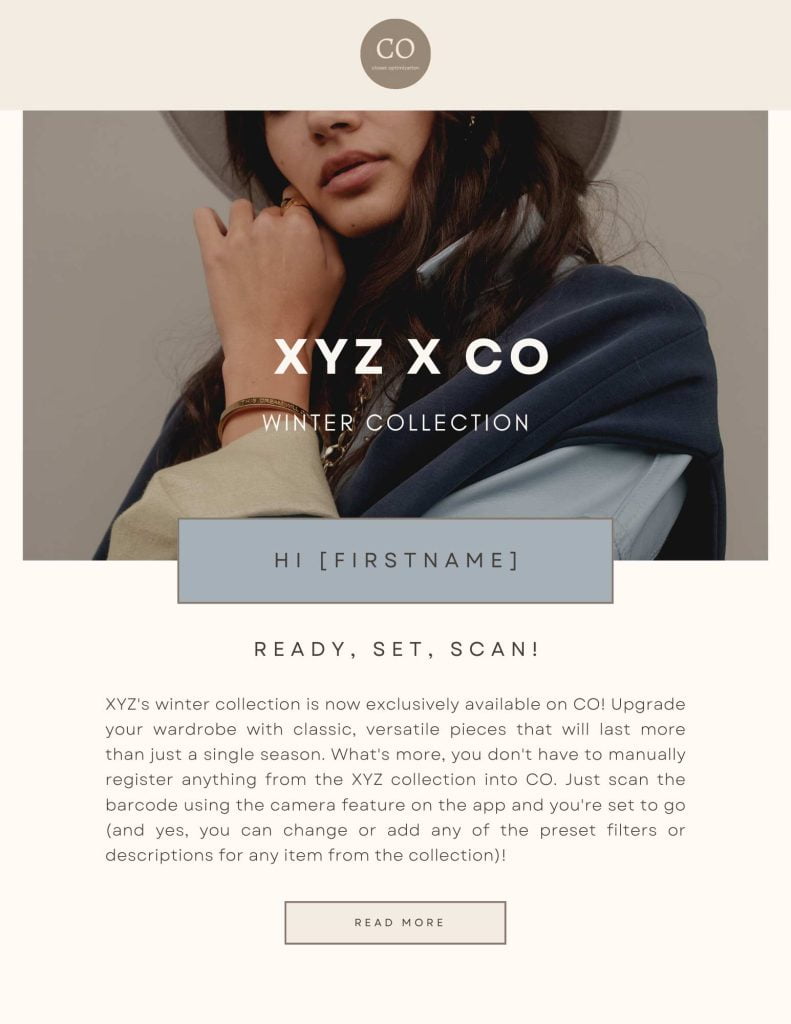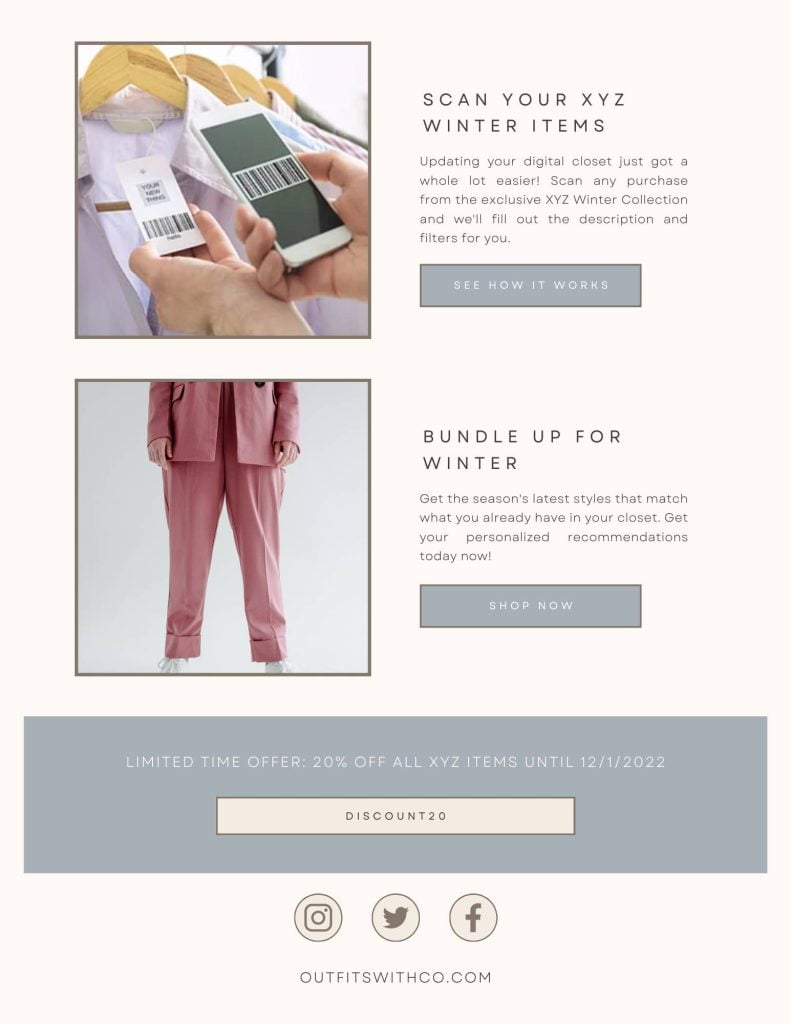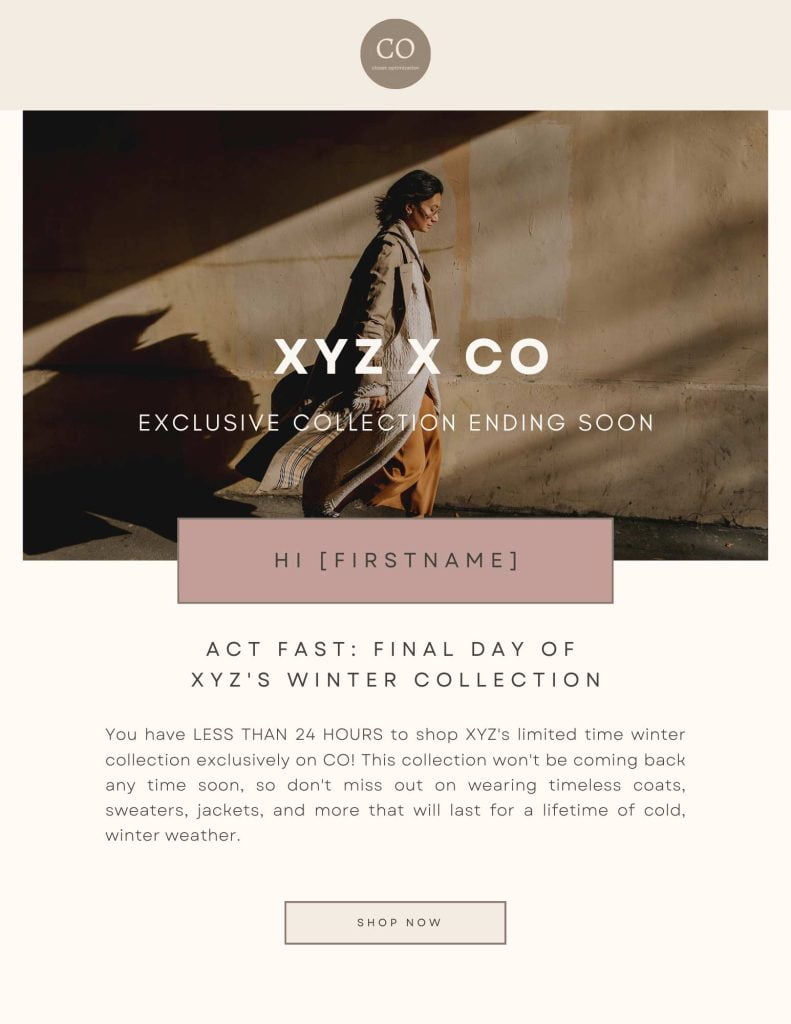Background Research
E-mail marketing is a powerful tool that marketers can use to retain their customer base after the initial conversion. Communications, such as newsletters and promotions, help contribute to customer retention, with “over 80 percent of business professionals [listing] e-mail as their top retention tool, outpacing other communication channels” (Zahay 69). The rates at which people convert to customers serve as proof. Batra and Keller’s findings indicate that e-mails prompt purchases three times more than that of social media, making this communication channel one of the most effective to use (126). This makes sense as users on social media may not want to go through the hassle of exiting the app or pausing their scrolling to make a purchase. Simply put, many may not be in the right mindset to buy something when on social media. With e-mail, however, people may be more ready to click links and go to different websites outside of e-mail.
Just because e-mail is one of the most successful marketing methods, does not mean marketers can send out e-mails without a strategy. An essential part to an effective e-mail design is a call to action (CTA), “a principle from direct marketing that simply refers to what the company wants the consumer to do upon receiving the communication,” which must be “specific and include a time deadline” (Zahay 75). Emphasizing a clear action for a customer to take relieves any barriers or mental burden trying to figure out where to find a certain page or how to buy an item. Deadlines also create a sense of urgency within the reader, allowing companies to see an increase in conversions sooner rather than later. These deadlines often include promos, discounts, or free items to entice the audience to act now. Furthermore, marketers can use CTA links to track and analyze customer interests and background to conduct e-mail retargeting campaigns (Zahay 77). For example, what link did the consumer click on? Was it the actual image of the product? Was it the text that said “free” on it? E-mail marketers can analyze this data to see what keywords or images entice people the most.
Another way to measure the success of e-mails is metric analysis. There are several statistics or KPIs marketers can use to measure the benefits of their marketing campaigns, such as average open rate, click through rate, unsubscribe rate, and more, making it easy to set quantitative goals (McGruer 221). The averages for each of these metrics depend on the industry. For example, Campaign Monitor’s study reveals an average open rate of 17.2% for all industries and a click-through rate of 2.69% (McGruer 222). However, the fashion industry has different rates. For apparel and accessories specifically, the average open rate is 31.82% and the click rate is 1.64% (Moore). Having these industry-specific averages in mind helps set realistic goals to achieve.
Based on the research, an e-mail marketing campaign will be most effective for customers who have already made a purchase or have already heard of CO rather than for recruiting new customers. This campaign will target these already-established customers who 1. have a registered account on the CO app and 2. have agreed to receive promotional e-mails/newsletters from CO. The series will start one week before the official launch of the CO x XYZ, where users will be informed of the partnership. On the day of the launch, another e-mail will be sent out explaining the new barcode scanning feature of the brand partnership. This ensures that once customers know of the feature, they will be able to purchase a XYZ item and scan it right away instead of making them wait until the feature launches. Three more e-mails will be sent out after the launch: halfway through the exclusive collection period, one week before the end of the period, and one day before the end of the period to maximize last-minute sales. This portfolio includes the pre-launch email, the launch day email, and the final email of the CO x XYZ newsletter series.






